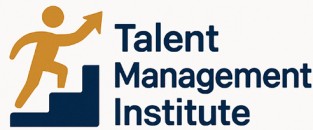
Understanding the HR Vault
Decoding the HR Vault
The HR vault is an indispensable library that modernizes the way organizations manage their human resources. Essentially, it acts as a comprehensive repository, housing essential employee data, templates, and resources necessary for effective talent management. For a business owner or management team, having access to a professionally designed HR vault can save both time and effort, ultimately contributing to peace of mind. The vault serves as a centralized hub of all employment-related forms and compliance documents, which are crucial for maintaining a structured approach to workforce management. This real-time access to information ensures that HR teams can efficiently support and manage their workforce's needs, allowing companies to focus on driving business performance. For small businesses, the implementation of a members vault allows the management team to efficiently handle compensation plans and employment agreements through expertly curated templates. These templates are not only free but also designed to streamline complex HR processes, providing a significant workflow advantage. To enhance your understanding of how a well-managed HR vault can revolutionize your approach to talent management, you'd benefit from exploring insights on coordinating talent management for creators and influencers. With the right strategy and resources in place, accessing the numerous advantages of an HR vault today can help businesses allocate more time to core operations while optimizing the management of their human capital.The Role of Technology in the HR Vault
Embracing Technology to Elevate Talent Management
In today's fast-paced business environment, the integration of technology into the HR vault is not just a perk—it's essential for effectively managing talent. The rise of digital tools has led to a transformation in how human resources function within organizations. Leveraging a digital HR vault, businesses can ensure swift access to employment data and employee forms, saving valuable time and reducing manual errors. Free templates that are professionally designed are now readily available, simplifying the creation of a comprehensive system for documenting human resources processes.- Improved Resource Management: By employing data management systems, companies can efficiently handle large volumes of employment data, ensuring compliance and easy access for authorized members of the management team.
- Enhanced Support and Service Delivery: A tech-driven HR vault provides the necessary support to small business owners looking to streamline their operations. This access to a real library of HR templates and forms can significantly enhance service delivery.
- Efficient Compensation Management: Digital tools facilitate seamless compensation management by ensuring accurate records, reducing discrepancies, and ultimately providing peace of mind to both employers and employees.
Strategies for Effective Talent Management
Blueprints for Streamlined Talent Management
Managing and nurturing talent within an organization can be a monumental task, especially when dealing with large volumes of employee data. Whether you're an HR professional in a bustling corporation or a small business owner, efficiency is key to handling the complexities of recruitment, onboarding, and employee retention with precision. Utilizing professionally designed vault templates offers managers a library of ready-made forms and resources, cutting down the time and effort required to maintain human resources workflows. When diving into the realm of compliant and efficient talent management, a few strategies stand out to keep your management processes on track:- Centralized Access: Investing in an HR vault today simplifies data access, ensuring management teams and business owners can retrieve vital employment records, compensation details, and employee information in real time. This not only provides peace of mind save in turbulent times but also supports seamless compliance and service requirements.
- Technology Integration: Leveraging technological advancements not only enhances efficiency but also transforms the way employee data is managed and accessed. Integrating suitable HubSpot consultants as a part of your strategy can provide critical support, ensuring that your vault functions smoothly across all touchpoints.
- Utilizing Vault Templates: Creating your own documentation from scratch can be time-consuming. Access to free and customizable templates means HR professionals can streamline form creation and modification, ensuring that employment documents are always up to date and reflect current business needs and compliance standards.
Challenges in Managing the HR Vault
Confronting the Hurdles of Human Resources Management
Effective management of the HR vault, akin to opening an intricately designed vault, presents several challenges. As organizations aim for efficient talent management, they often encounter various obstacles that demand adept solutions. One significant challenge is ensuring compliance. With constantly evolving employment regulations, businesses must keep an updated library of legal frameworks. This requires real-time access to compliance data and professionally designed templates to mitigate risks. Small business owners, in particular, may find themselves stretched thin, lacking the resources to maintain an up-to-date HR vault. Time and resource management is another pressing hurdle. Talent management involves not just recruiting suitable candidates but maintaining their engagement and compensation effectively. Businesses need well-structured forms and templates, available in a members' vault, to streamline these processes. Such efficient tools ensure peace of mind while saving precious time for management teams. Data security concerns are amplified when dealing with sensitive employment information. The vault must provide secure access, ensuring employee data is protected from unauthorized access while still allowing the necessary flexibility for HR operations. Organizations might also face technical support challenges without adequate service networks to aid in overcoming tech-related issues. Finally, business owners must reconcile maintaining the core human resource function with assisting in strategic growth initiatives. Aligning business objectives with talent management strategies is paramount, yet it is often hindered by limited budget allocations and human capital. Navigating these challenges requires a comprehensive understanding and strategically aligning the resources available. Efforts to effectively manage the HR vault today necessitate adapting to technological advancements and incorporating robust talent management systems that promise support and enhanced efficiency.Case Studies: Success Stories from the HR Vault
Real-Life Transformation with the HR Vault
The HR Vault has emerged as a critical resource for businesses, providing a centralized library of tools and templates essential for efficient talent management. By implementing the HR Vault, numerous companies have experienced significant organizational improvements and peace of mind.- Streamlining Access to Employment Data: Small businesses often struggle with effectively managing employee data. The HR Vault offers a comprehensive set of vault templates and forms that help streamline this process, allowing business owners to access necessary information quickly. This not only saves time but ensures that compliance requirements are consistently met.
- Enhancing Management Team Efficiency: With professionally designed resources readily available, management teams can focus more on strategic planning rather than administrative tasks. These tools provide support in executing HR functions smoothly, facilitating real-time decision-making and management.
- Boosting Employee Engagement: By utilizing the service-oriented aspects of the HR Vault, businesses have reported an uptick in employee satisfaction. Access to compensation data and personalized employment resources empowers employees, fostering a sense of ownership and commitment.
- Compliance and Peace of Mind: One of the most significant advantages reported is the improved compliance support provided by the HR Vault. The assurance of having up-to-date, accurate data and templates ensures peace of mind for business owners, reducing the risk of legal and regulatory issues.
Future Trends in Talent Management and the HR Vault
Emerging Trends in Talent Management
As we look to the future, the landscape of talent management is evolving rapidly. The integration of advanced technologies and innovative strategies is reshaping how businesses manage their human resources. Here are some key trends to watch:
- Data-Driven Decision Making: The use of data analytics in the HR vault is becoming increasingly important. By leveraging data, businesses can make informed decisions about employee compensation, performance, and development. This data-driven approach not only enhances compliance but also supports strategic planning.
- AI and Automation: Artificial intelligence and automation are transforming HR processes. From automating routine tasks to providing insights into employee engagement, these technologies save time and provide peace of mind to HR professionals. AI-powered tools can also help in designing professionally crafted templates for various HR forms and resources.
- Remote Work and Flexibility: The shift towards remote work is here to stay. Companies are adapting by creating flexible employment policies and utilizing digital tools to maintain productivity. This trend is particularly beneficial for small business owners who need to access a diverse talent pool without geographical constraints.
- Focus on Employee Experience: Enhancing the employee experience is a priority for many organizations. By using real-time feedback and engagement tools, companies can create a supportive environment that fosters growth and satisfaction. This focus on experience is crucial for retaining top talent and ensuring long-term success.
- Continuous Learning and Development: The demand for continuous learning opportunities is increasing. Businesses are investing in training programs and resources to upskill their workforce. This not only supports career development but also aligns with business goals, ensuring that employees are prepared for future challenges.
Preparing for the Future
To stay ahead, businesses must embrace these trends and integrate them into their talent management strategies. By doing so, they can unlock the full potential of their HR vault, ensuring that they remain competitive in a rapidly changing market. As the role of technology continues to expand, the ability to adapt and innovate will be key to achieving success in talent management.













